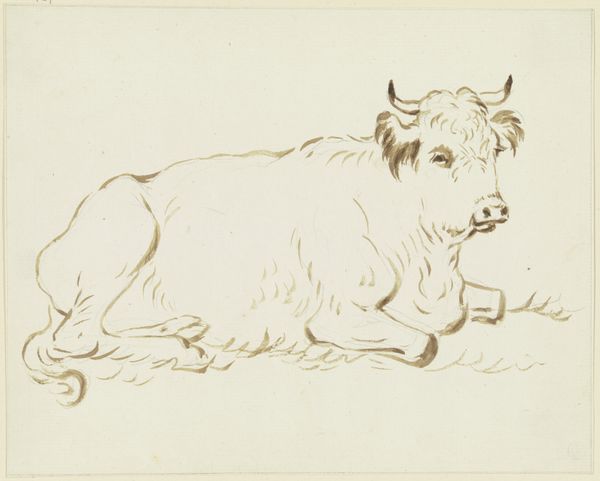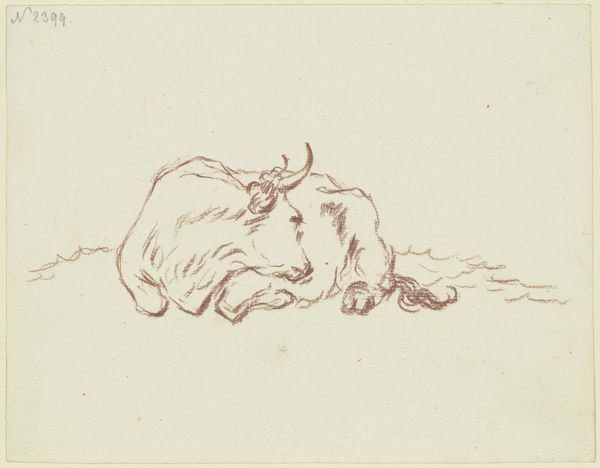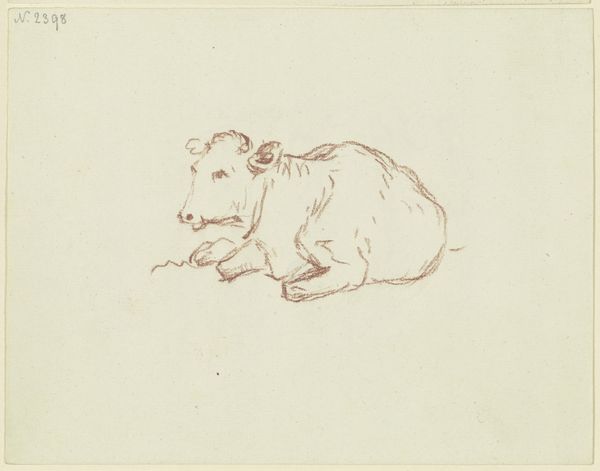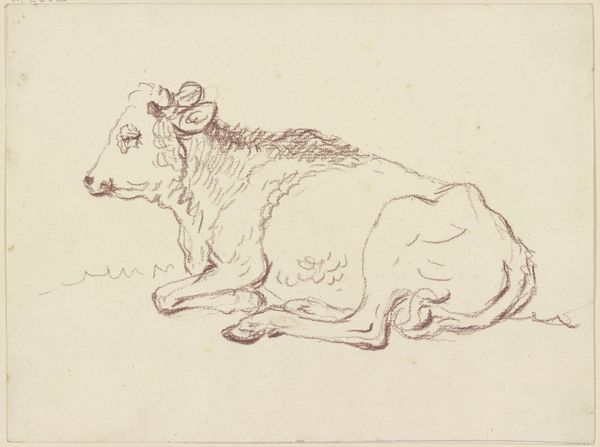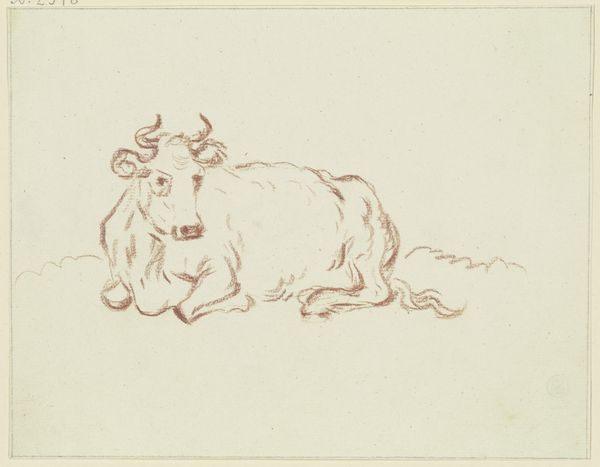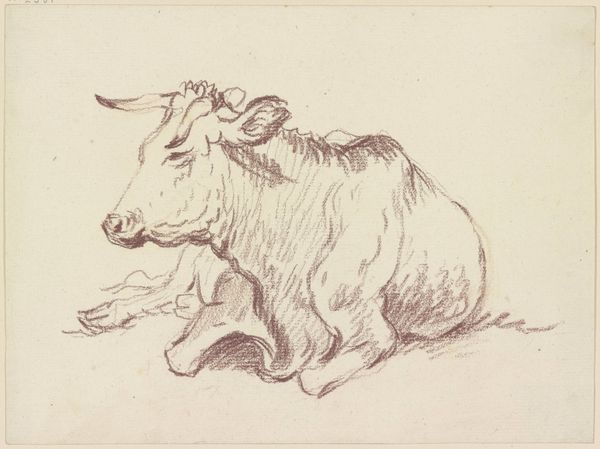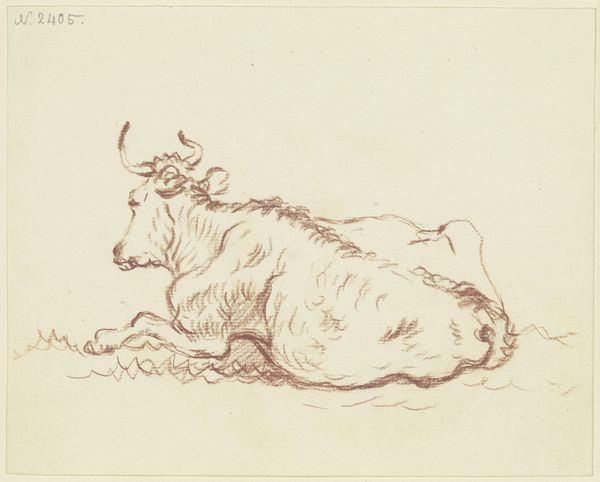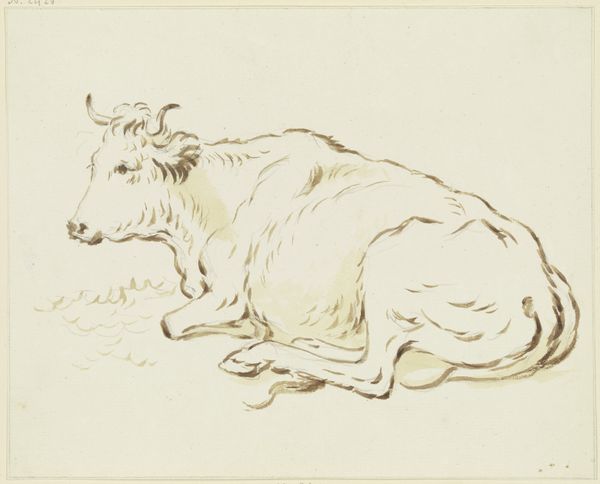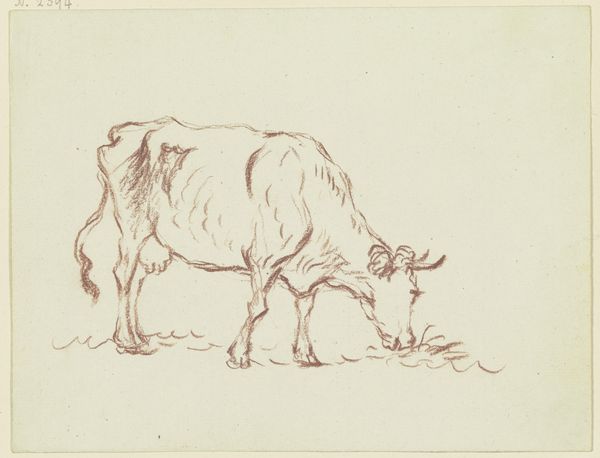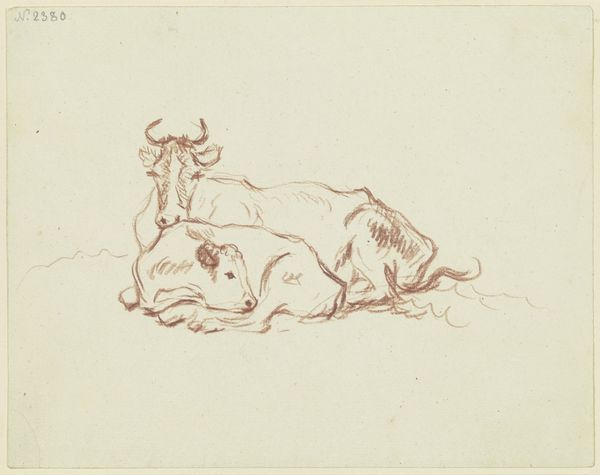
drawing, pencil, chalk
#
drawing
#
landscape
#
pencil
#
chalk
#
15_18th-century
#
realism
Copyright: Public Domain
Friedrich Wilhelm Hirt made this drawing of a reclining cow with graphite on paper. Looking at this pastoral image, we might ask ourselves about the role of such scenes in their specific time and place, and how they reflect broader social and cultural values. Germany in the 19th century was undergoing significant social and economic changes, including industrialization and urbanization. As such, rural life and nature were often idealized, becoming symbols of a simpler, more authentic past. This drawing, with its detailed attention to the cow's form, can be seen as part of that idealization. The Städel Museum itself, as an institution, played a role in shaping artistic tastes and values. By collecting and displaying works like this, the museum helped to promote certain styles and subjects, and to create a sense of national identity. Understanding this drawing requires considering the social and cultural context in which it was made. Researching the history of German art institutions, the development of pastoral imagery, and the social history of agriculture can all help us to better appreciate the artwork's deeper meaning.
Comments
No comments
Be the first to comment and join the conversation on the ultimate creative platform.
